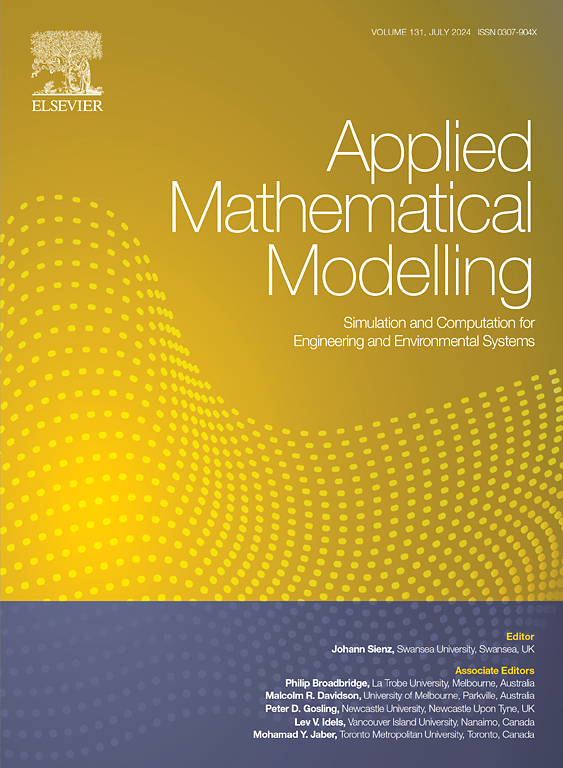Tailoring circumferential traveling waves in a damped circular plate coupled to a spring-mass oscillator using phased force excitations
IF 4.4
2区 工程技术
Q1 ENGINEERING, MULTIDISCIPLINARY
引用次数: 0
Abstract
We develop an analytical approach to produce circumferential traveling waves in a lightly damped circular plate under the cyclic symmetry-breaking scenario caused by a local spring-mass oscillator, using three-point actuators distributed either uniformly or nonuniformly along a circumferential path. Modal analysis and forced vibration of the lightly damped plate-oscillator system are examined. The addition of the spring-mass oscillator leads to separation of the degenerate modes and to associated frequency curve-veering phenomena. The plate-oscillator system exhibits two adjacent modes with nearly identical natural frequencies, which closely resemble the degenerate cosine and sine modes of an axisymmetric pure plate. A typical degenerate mode pair of a pure (uniform) plate is first selected, and the actuators’ positions, amplitudes and phases are tuned based on wave kinematics to achieve continuous rotation of the plate mode. Next, an approximately degenerate mode pair resembling the pure plate modes is identified, and the excitation frequency is optimized using a standing-wave ratio and a traveling-wave index based on complex orthogonal decomposition to generate circumferential traveling waves in the plate-oscillator system. It is found that standing waves occur at the resonance frequency; however, by tuning the excitation frequency to a value halfway between the natural frequencies of the two adjacent modes, the effects of dynamical imperfections can be mitigated, leading to traveling waves. Adding external damping can result in partially modulated standing waves, which is much more significant in nonuniform configurations. The wave dynamics are verified through finite element analysis. This work will be helpful for practical application of particle transport on two-dimensional surfaces by robust circumferential traveling waves.
求助全文
约1分钟内获得全文
求助全文
来源期刊

Applied Mathematical Modelling
数学-工程:综合
CiteScore
9.80
自引率
8.00%
发文量
508
审稿时长
43 days
期刊介绍:
Applied Mathematical Modelling focuses on research related to the mathematical modelling of engineering and environmental processes, manufacturing, and industrial systems. A significant emerging area of research activity involves multiphysics processes, and contributions in this area are particularly encouraged.
This influential publication covers a wide spectrum of subjects including heat transfer, fluid mechanics, CFD, and transport phenomena; solid mechanics and mechanics of metals; electromagnets and MHD; reliability modelling and system optimization; finite volume, finite element, and boundary element procedures; modelling of inventory, industrial, manufacturing and logistics systems for viable decision making; civil engineering systems and structures; mineral and energy resources; relevant software engineering issues associated with CAD and CAE; and materials and metallurgical engineering.
Applied Mathematical Modelling is primarily interested in papers developing increased insights into real-world problems through novel mathematical modelling, novel applications or a combination of these. Papers employing existing numerical techniques must demonstrate sufficient novelty in the solution of practical problems. Papers on fuzzy logic in decision-making or purely financial mathematics are normally not considered. Research on fractional differential equations, bifurcation, and numerical methods needs to include practical examples. Population dynamics must solve realistic scenarios. Papers in the area of logistics and business modelling should demonstrate meaningful managerial insight. Submissions with no real-world application will not be considered.
 求助内容:
求助内容: 应助结果提醒方式:
应助结果提醒方式:


